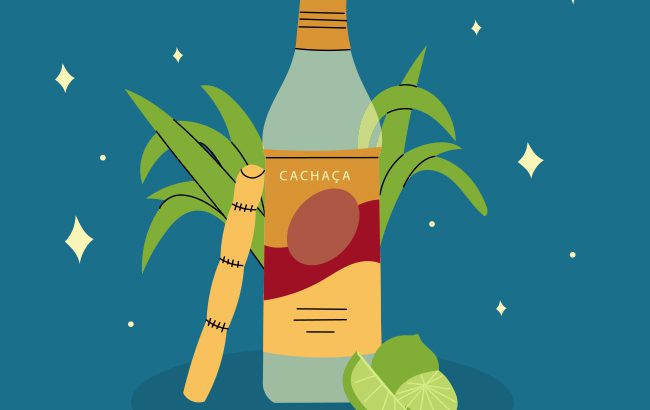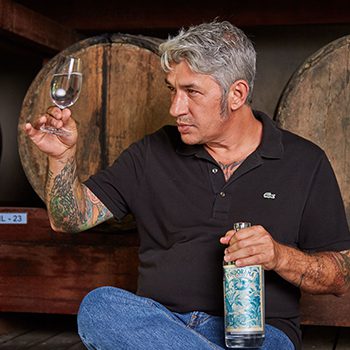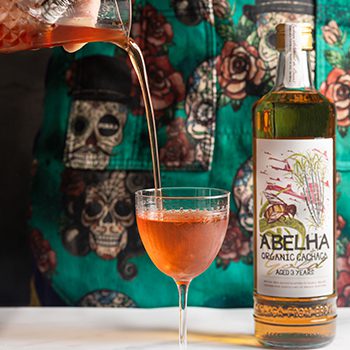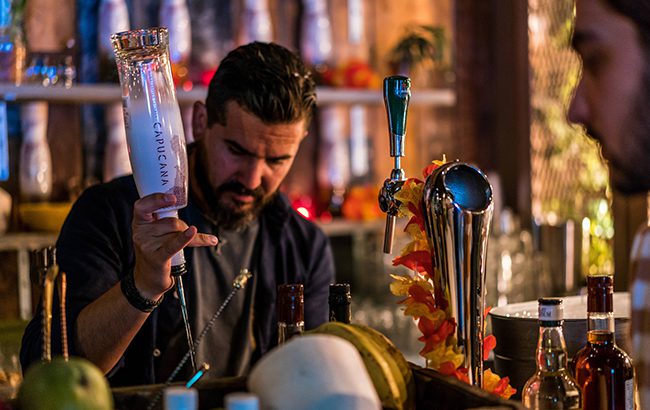This website uses cookies so that we can provide you with the best user experience possible. Cookie information is stored in your browser and performs functions such as recognising you when you return to our website and helping our team to understand which sections of the website you find most interesting and useful.
Cachaça producers on taking the spirit global
By Clinton CawoodBrazilian stalwart cachaça is a firm favourite in the South American country, but now producers are making a concerted effort to expand its range by telling overseas consumers about the samba spirit.

*This feature was originally published in the June 2022 issue of The Spirits Business
By volume it’s one of the world’s largest spirits categories, but cachaça is an unusual case, with the vast majority consumed in its domestic market. There’s no shortage of brands looking to crack the export market, however.
Depending on who you ask, Brazil accounts for anything between 97% and more than 99% of total cachaça consumption. The local market declined slightly in volume in 2020, according to IWSR Drinks Market Analysis, but rose by more than 11% in value. Global volume fell by a bit more in 2020, but rose in value by 8.4%.
There are some practical reasons for the rise in value domestically, says IWSR Drinks Market Analysis senior market analyst Luciano Anavi. “The unfavourable exchange rate during 2021 pushed imported alcoholic beverage prices up, which allowed cachaça producers to hike their prices,” he says.
“They also profited from their low‐price advantage during the pandemic, being able to supply local demand while imported goods were seriously affected by the freight crisis and the problems of product allocations.”

Position threatened
The local market isn’t without its challenges, however. Carlos Lima, executive director of the Brazilian Institute of Cachaça [IBRAC], says: “Before the pandemic, cachaça was the second most consumed alcoholic beverage in Brazil, but with the market drop we had, and with the growth of wine consumption in Brazil, I think this position was threatened.”
Lima is nevertheless optimistic: “We’ve seen positive changes in the domestic cachaça market – not at the speed we would like, but they are happening. The Brazilian consumer is gradually beginning to have more knowledge about the drink, and has been exploring new forms of consumption.”
Meanwhile, export markets remain an attractive prospect for a number of brands. Reporting sales of more than seven million litres abroad last year, Lima lists Paraguay as the leading export market by volume, with the US taking the top spot by value. Germany, Portugal and France are among the category’s other important regions.
There’s clearly an opportunity here. Citing data from Trademap 2020, Lima highlights global sugarcane imports worth US$1.6 billion, of which cachaça accounts for US$9.5 million. “Just by comparing this we can verify that there’s a great opportunity for cachaça, and the potential for growth around the world,” he says.
As Anavi puts it: “Exports have always been an objective, mimicking the example of Tequila, but this has not yet been successful.” To help producers remedy this, IBRAC has teamed up with Brazilian trade‐and‐investment‐promotion agency Apex Brasil on a project entitled, ‘Cachaça: Taste the new, Taste Brasil’. It aims to increase the number of countries in which cachaça is sold, as well as increase the volume and value of exports, while raising recognition of the category. The project includes 55 companies, and already has plans for a number of key markets.

Abelha Organic Cachaça is one of the brands focused on markets outside of Brazil. “It’s still in an early phase, but export is very important,” says brand owner Tom Stockley. “We believe that high‐quality cachaça should be, and undoubtedly will be, competing at the same level as various other spirit categories in the not too distant future.”
As Pindorama Cachaça’s Milton Lima puts it: “Exporting cachaça is the dream of every producer – taking their product and their history to other countries.”
The growth of exports is essential for the category, believes Fubá Cachaça founder Rafael Agapito. “It’s a crucial element to guarantee the growth and development that will enable cachaça to become a mainstay of the spirits industry,” he says.
The strength of the local market is enough incentive to look further afield, according to Jorge Balbontin, business development manager for Vantguard, which counts Capucana Cachaça as part of its portfolio. “The domestic market is so predominant that it’s very difficult to succeed locally,” he says. “We want to help to build the category outside of Brazil and, more importantly, outside of the clichés attached to it.”
As brands continue to focus on overseas markets, perceptions of the category, and those clichés, are changing, says Yaguara Cachaça co‐founder Hamilton Lowe.
“In many ways the preconception of cachaça as an aggressive spirit helps, as the contrast is huge when people taste and mix the spirit. Further to that it has a huge potential for variants through ageing and terroir,” he says. “Exports continue to grow, and offer us our biggest growth channel. Internationally it’s still something new and surprises many people with how much of an artisanal category it is.”
Outside of its home market, cachaça is invariably linked with rum, a category that’s doing well at the moment. “The continued rise of rum globally helps greatly,” confirms Lowe. “People are increasingly seeing cachaça as a Brazilian‐styled rum, which is helpful as it creates context about where it sits, and how to use it.”

For Carlos Lima, however, the association isn’t necessarily a beneficial one. “There are many challenges for export growth. For example, in many markets, cachaça is still defined or known as rum,” he says.
What most agree on, however, are the benefits of the category’s environmental credentials. “Sustainability for most cachaça brands is a strength,” confirms Lowe, describing Yaguara’s solar panels, organic status and reuse of byproducts to create biofuel. “Artisanal cachaça distilleries are often sustainable just to increase efficiency in energy costs, using gravity rather than pumping liquid around, for example.”
Beyond the status quo
These considerations have been core to Abelha from the outset. “Our distillery was built to be 100% sustainable, and we’re progressing with some interesting approaches going forward,” says Stockley. “This trend is making distilleries and brands put sustainability front and centre, which is great to see. Every producer is looking beyond the status quo on how to be even more sustainable every step of the way, as well as communicating this progression in the best way possible.”
Pindorama is among those brands too. “We consider the sustainability of the product,” says Lima, describing the brand’s organic production and its development of an agro‐ forest. “We see no other path than this.”
At Fubá, there are tangible results. “Our sustainable production methods are helping us improve sales, as more and more consumers are looking for brands with a lower environmental impact,” says Agapito.
With credentials such as these, not to mention growing recognition of the category and its association with rum, cachaça undoubtedly has what it takes to make it big outside of Brazil, but with such a strong domestic market, it remains to be seen if it will do so.

